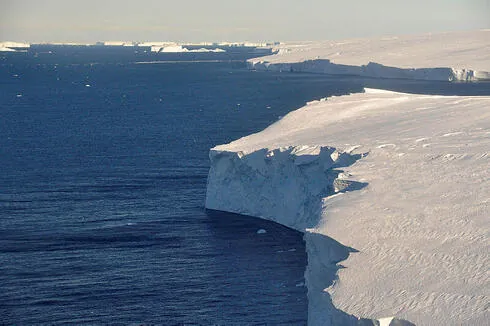
Can Glacial Engineering Rescue the 'Doomsday Glacier'?
2024-11-04
Author: Sarah
Introduction
As the climate crisis accelerates, the West Antarctic ice sheet is experiencing alarming levels of retreat and melting, leading to a harrowing rise in sea levels that threatens low-lying coastal populations around the globe. At the center of this crisis is the Thwaites Glacier, infamously known as the "Doomsday Glacier."
Recent Research
Recent research from the University of California, Irvine, and the University of Waterloo, published in the Proceedings of the National Academy of Sciences, reveals that warming tidal currents are driving the rapid melting of Thwaites Glacier, surpassing earlier predictions. Meanwhile, another study from Dartmouth College and the University of Edinburgh, featured in Science Advances, suggests that the glacier may be more resilient than previously thought, introducing uncertainty into the discussion about its future.
Impact of Thwaites Glacier
Thwaites Glacier is approximately eight times the size of Israel and larger than the entire state of Florida. If it were to dissolve completely, it could contribute up to four meters to global sea level rise, posing a dire threat to major coastal cities and island nations. Alarmingly, Thwaites Glacier currently accounts for 4% of global sea level rise, with a loss of about 50 billion tons of ice each year due to climate change. Experts warn that we are approaching a climate tipping point that could lead to the irreversible disintegration of the entire West Antarctic ice sheet.
Glacial Climate Engineering Solutions
In light of these risks, a growing number of scientists are investigating glacial climate engineering as a possible solution to mitigate the dire impacts of glacier melt. This innovative approach aims to slow or halt the retreat of glaciers in the face of rising global temperatures. A consortium of glaciologists, including experts from the University of Chicago and the University of Lapland, highlighted the urgency of exploring these options in a report released in July. Professor John Moore of the University of Lapland emphasized the need for immediate action, stating, "It will take us 15 to 30 years to develop a robust knowledge base to recommend or reject glacial climate engineering interventions."
Proposals for Intervention
Proposals under consideration include the installation of vast underwater curtains designed to intercept warm tidal currents, which could help to mitigate glacial melt directly. Climate economist Gernot Wagner from Columbia University argues that for critical polar areas facing rapid decline, such engineering solutions might be among the only feasible strategies to mitigate the effects of climate change.
Skepticism and Considerations
However, these ideas are not without considerable pushback. Many glaciologists and climate scientists express skepticism regarding the practicality of such interventions, suggesting that reliance on climate engineering could shift focus away from the root cause of the problem: anthropogenic greenhouse gas emissions. Wagner warns, "While climate engineering may extend the timeline to address greenhouse gas emissions, it is not a definitive solution to climate change."
Conclusion
With the potential for drastic climatic shifts looming on the horizon, climate engineering has become a contentious topic of discussion. While some view it as a necessary tool for our survival, experts agree that it must complement, not replace, urgent actions to reduce carbon emissions globally. The future of Thwaites Glacier remains uncertain, but one thing is clear: time is running out, and we must act decisively to address the looming threats posed by climate change.




 Brasil (PT)
Brasil (PT)
 Canada (EN)
Canada (EN)
 Chile (ES)
Chile (ES)
 España (ES)
España (ES)
 France (FR)
France (FR)
 Hong Kong (EN)
Hong Kong (EN)
 Italia (IT)
Italia (IT)
 日本 (JA)
日本 (JA)
 Magyarország (HU)
Magyarország (HU)
 Norge (NO)
Norge (NO)
 Polska (PL)
Polska (PL)
 Schweiz (DE)
Schweiz (DE)
 Singapore (EN)
Singapore (EN)
 Sverige (SV)
Sverige (SV)
 Suomi (FI)
Suomi (FI)
 Türkiye (TR)
Türkiye (TR)